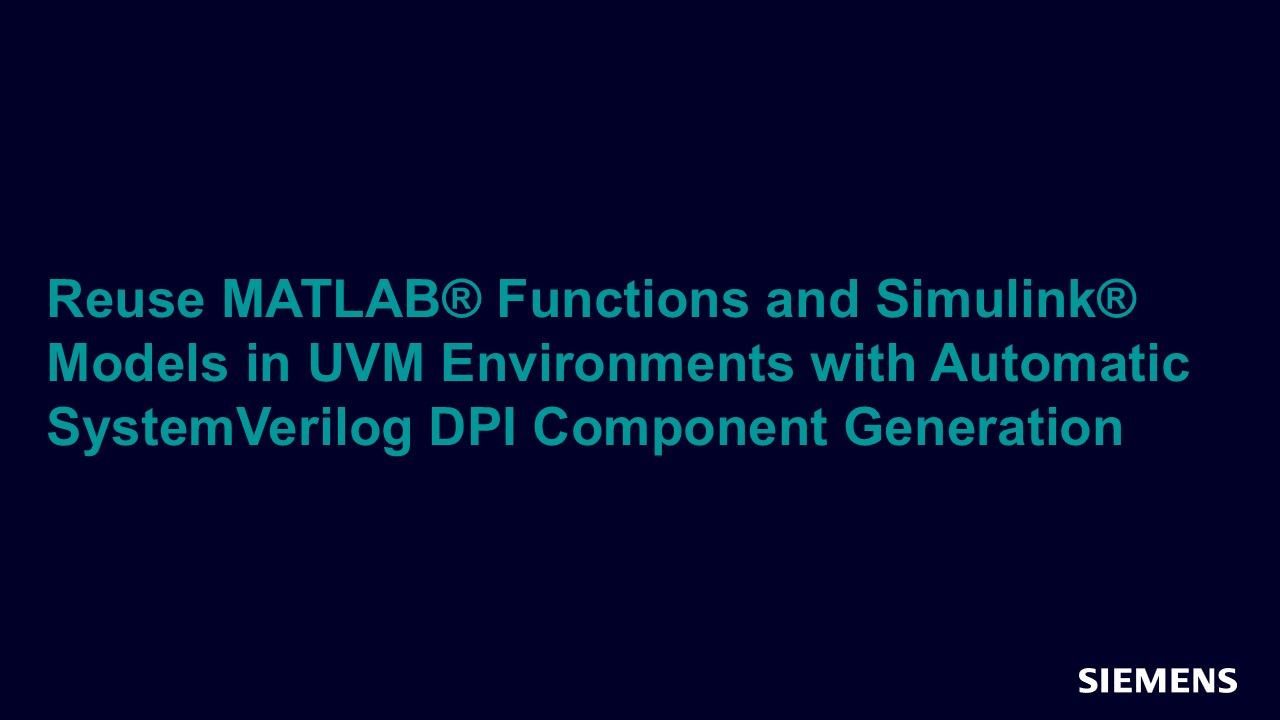Reuse MATLAB® Functions and Simulink® Models in UVM Environments with Automatic SystemVerilog DPI Component Generation
The growing sophistication of verification environments has increased the amount of infrastructure that verification teams must develop. For instance, UVM environments offer scalability and flexibility at the cost of upfront efforts to create the UVM infrastructure, bus-functional models, coverage models, scoreboard, and test sequences.

Full-access members only
Register your account to view Reuse MATLAB® Functions and Simulink® Models in UVM Environments with Automatic SystemVerilog DPI Component Generation
Full-access members gain access to our free tools and training, including our full library of articles, recorded sessions, seminars, papers, learning tracks, in-depth verification cookbooks, and more.